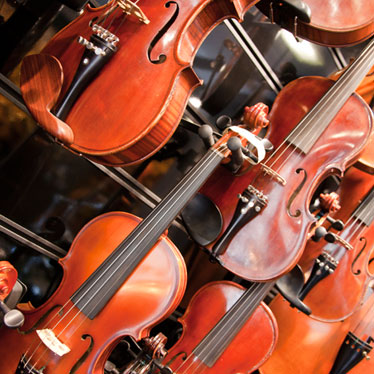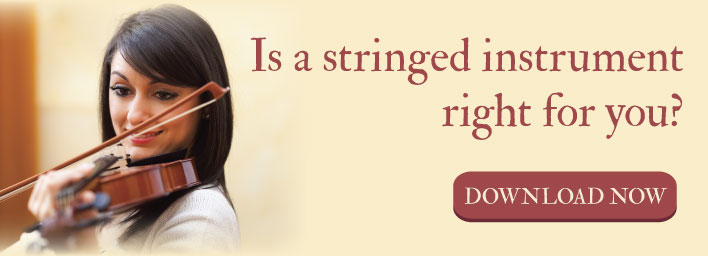Torn Between Two Strings: Violin or Viola?

Choosing the right string instrument doesn’t always happen right away. Sometimes it requires trying different instruments and settling into the one that sounds and feels best as you play. Many string instrumentalists decide between the violin and the viola early on. There are multiple differences between the two instruments, above and beyond size, so reviewing these differences may help you determine which instrument is the one for you.
If you are new to playing a string instrument, we recommend listening to some of the most famous violin and viola solos or concertos. You’ll hear the difference in how the instruments sound, and this may immediately determine which sound you appreciate the most. Visit, 12 Amazing Viola Solos, and, Amazing Violin Solos, to get started.
Violas are bigger
A full-sized violin is usually around 14-inches from the tip of the scroll (or head) to the bottom of the end button. Violas are notably larger, with full-size instruments measuring around 18-inches in length. While it’s true that you can purchase different sizes of instruments, adult violists with smaller hands often choose smaller violas—there is no “full size” usually. There is also a lot of size and shape difference in violas and violists can choose the one most comfortable to them.
Music is scored on the Alto- or C-Clef
The viola’s larger size and larger strings means it produces deeper, lower sounds. It’s considered a mid-alto-voiced instrument, and the viola is the only string instrument in the orchestra with music scored on the Alto Clef. The middle line on the staff is middle C, hence the Alto Clef is also referred to as the C-Clef. Starting at the bottom line, the C-Clef staff reads F-G-A-B-C-D-E-F-G.
This takes a while to get used to, so if it is a struggle for you to read music, moving from the violin to the viola could be a challenge for you. On the flip side, if the sound of the viola resonates with you and you’re innately drawn to it, you may find reading the notes on the C-Clef is easier because you are more inspired by the process.
They are tuned differently
Viola and violins are tuned differently – with the viola being tuned a fifth lower than the violin. This lower range of sound is more attractive to some, and it is the most common reason violinists switch to the viola. If you are currently a violinist, the different tuning of the viola (C, G, D, and A – with A being the highest), means you have to relearn tuning and fingering all over again. Those with innate musical ability find this an easily surmountable hurdle, while others can find it more challenging.
Lower note range
Due to its size and its tuning, the viola can play notes that are four steps lower than the lowest notes on the violin, but violins can play higher notes than the viola. As a result, violins are far more likely to have the “melody line,” and are often considered the stars of the orchestra, while viola players spend much of their time in the orchestra playing harmonic accompaniments. Just as altos and basses love to sing harmony in the choir, many violists really appreciate the ability to play harmonies to support the melody lines – and this is also a bonus for your ear training. However, if you prefer to play the melody – or you desire to become a concertmaster someday – violin is probably your better choice.
The overall (lower) sound
If you ask violists how they chose their instrument, most have one of two answers: either they loved the violin but preferred the deeper sound of the viola, OR they were drawn to the cello but couldn’t imagine having to carry it around all the time.
In both cases, it’s the lower, more resonant sound profile that appeals to most violists. If you, too, prefer lower, richer and more resonant sounds – and aren’t drawn to play cello or bass – the viola may be the just right string instrument for you.
Are you debating between playing the violin or the viola? We recommend visiting a string music store near you and sharing your dilemma with the staff. They’ll let you practice, play, feel, and listen to both instruments and the odds are you’ll know which one you prefer by the end of the session. And, remember that as your musicianship grows, so does your ability to add other instruments to the mix. You may find that your penchant for the viola is the first step in your path as a multi-instrumentalist, and that’s a beautiful thing.


